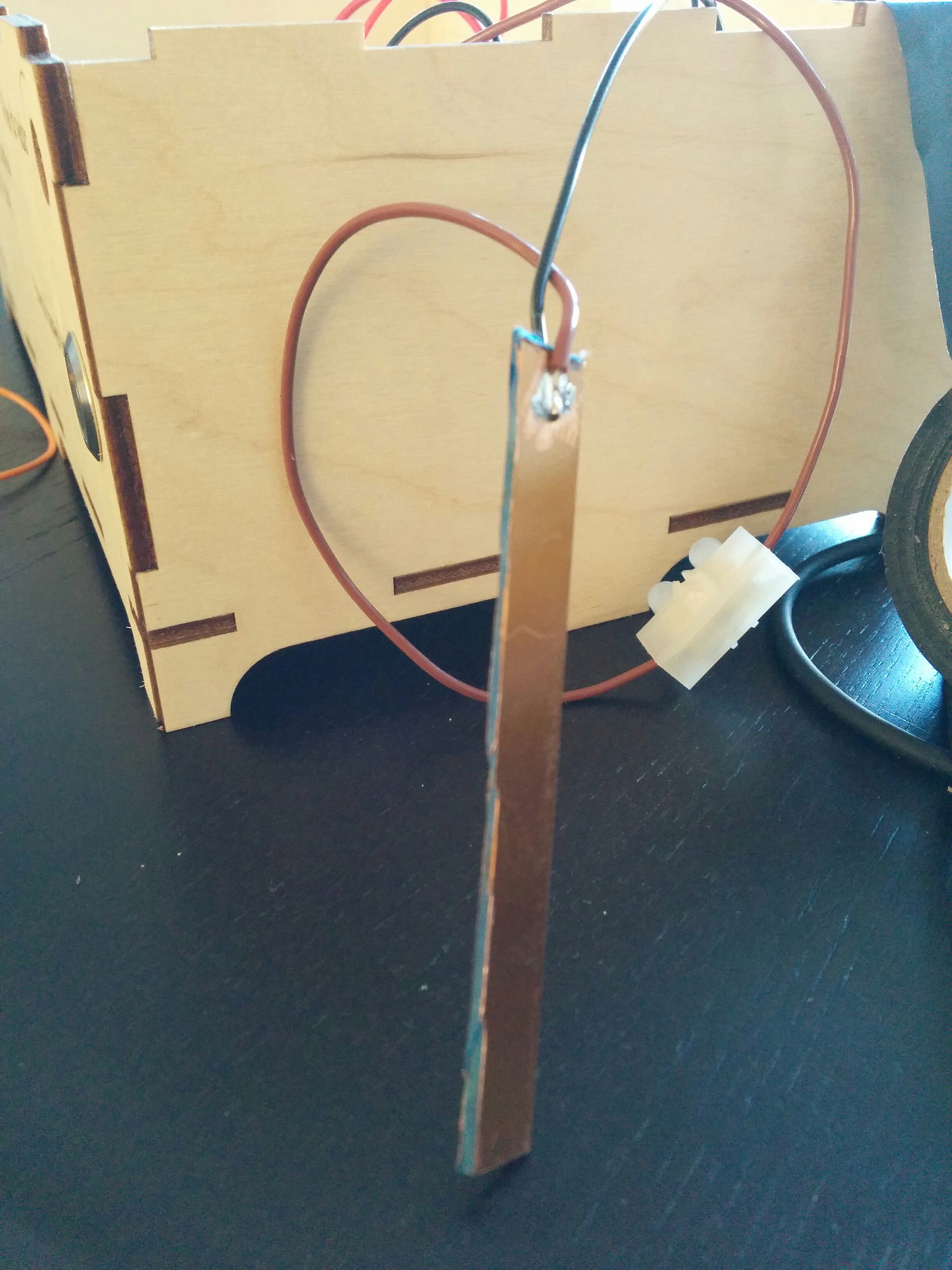Ok i wanted to use the Chirp as a soil moisture sensor but they are out of stock :(
Than I started thinking, why spend extra money on a seperate sensor? The teensy LC has some very capable capacitive measuring pins on its own.
So from some left over PCB material, 2 layers of copper, I created a capacitive sensor. I cut a strip of 80mm x 10mm. 1 layer is connected to ground the other to pin 16. Next I wrapped this all in electrical tape.

From some quick testing it seems to work. Using touchRead() I get a value of aprox 2200 when it is out of the soil (or very dry) and > 3000 when it is wet.
So this is going to be tested for the next couple of days (weeks). If everything works I am going to create a PCB version of this sensor.
 Armin
Armin
Discussions
Become a Hackaday.io Member
Create an account to leave a comment. Already have an account? Log In.
the idea of a moisture sensor measuring resistance is very easy. Sensitivity isn't even that important.. Using a single sensor would involve permanently placing the sensor in the pot, with the same plant, and then making an empirical table of the resistance vs. moisture level. When you move the sensor, or soil isn't the same density around the sensor, or or or or or.. lots of problems!
Some thoughts I had:
1. utilize a perimeter of tiny sensors around the pot. If you measured them all independently, it would take up a great deal of I/O pins..
Putting each sensor pair (+ vs. ground) in a parallel circuit with a couple of the other sensor pairs would essentially give you a very rough idea of what the average moisture level is. That would help solve the problem of limited I/O as well as give you some redundancy in sensors... There is a couple other iterations that could also be possible, but I'll limit my ramblings.
2. Use an improvised transformer. Take a nail, and wrap some wire around it, and when you put voltage through the wire, it will generate a magnetic field.. Then take another nail, with wire wrapped around it, and place it relatively close to the energized nail, and measure the induced voltage.. The more moisture that is present in the soil will affect how much voltage is induced in the second nail. Since you can encapsulate everything in plastic, there is no corrosion related problems. There are several problems with this too, but hopefully this will generate some thought.
3. Lastly, I did find a very nice article from the Alberta Canada department of Agriculture and Forestry.
http://www1.agric.gov.ab.ca/$department/deptdocs.nsf/all/eng8291#Introduction
Most of the examples are out of our league.. I left my neutron source, ultra high vacuum chamber, and nitrogen purged backscattering detector in my other lunch box. :)
I gotta run for father's day festivities, but have a read... The porous blocks stuff is the part (I think) you should focus on.
-Kyle
Are you sure? yes | no
Thanks that is a very interesting link. (Last time moving I got rid of my neurtron source and ultra high vacuum chamber ;) )
I am currently trying to measure it capacitivly. I got the idea from Chirp soil moisture sensor. http://wemakethings.net/chirp/ and his explanation http://wemakethings.net/2012/09/26/capacitance_measurement/ .
Advantage of this method is that it does not require (electrical) contact. So no oxide on the electrodes.
Because Chirp was sold out I tried to make something similar. It uses the sample working principle as the arduino capacitive touch library but the teensy has some dedicated hardware for this.
So I don't know if I am on the right track at the moment, but someone is selling products based on this it should work. Maybe I buy a chirp and see how well it works.
Are you sure? yes | no
That copper is gonna create copper oxide in no time flat, even if there is electrical tape involved. Have you thought about at least putting some solder on the bare copper?
Are you sure? yes | no
Yes I have thought of it (have seen it on the Chinese parts).
The pcb material I used is the photosensitive stuff. So there is a layer over the copper. So to be able to solder it, you need to scratch this away. But anyway it will create oxide very quickly.
If this works I will create a small pcb and order it with nice soldermask and silkscreen.
At the moment I am not completely satisfied with using the capacitive method. It is very sensitive on how the sensor is positioned. So to get a reliable measurment out of this requires a bit more thought.
Are you sure? yes | no